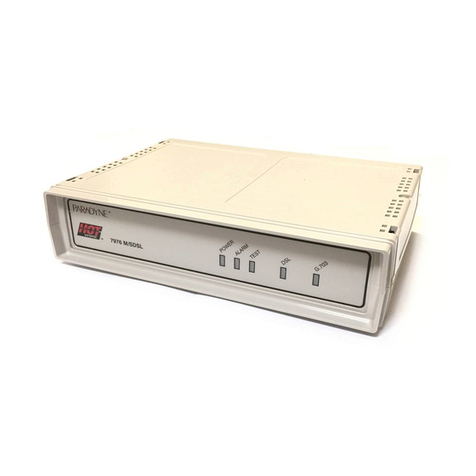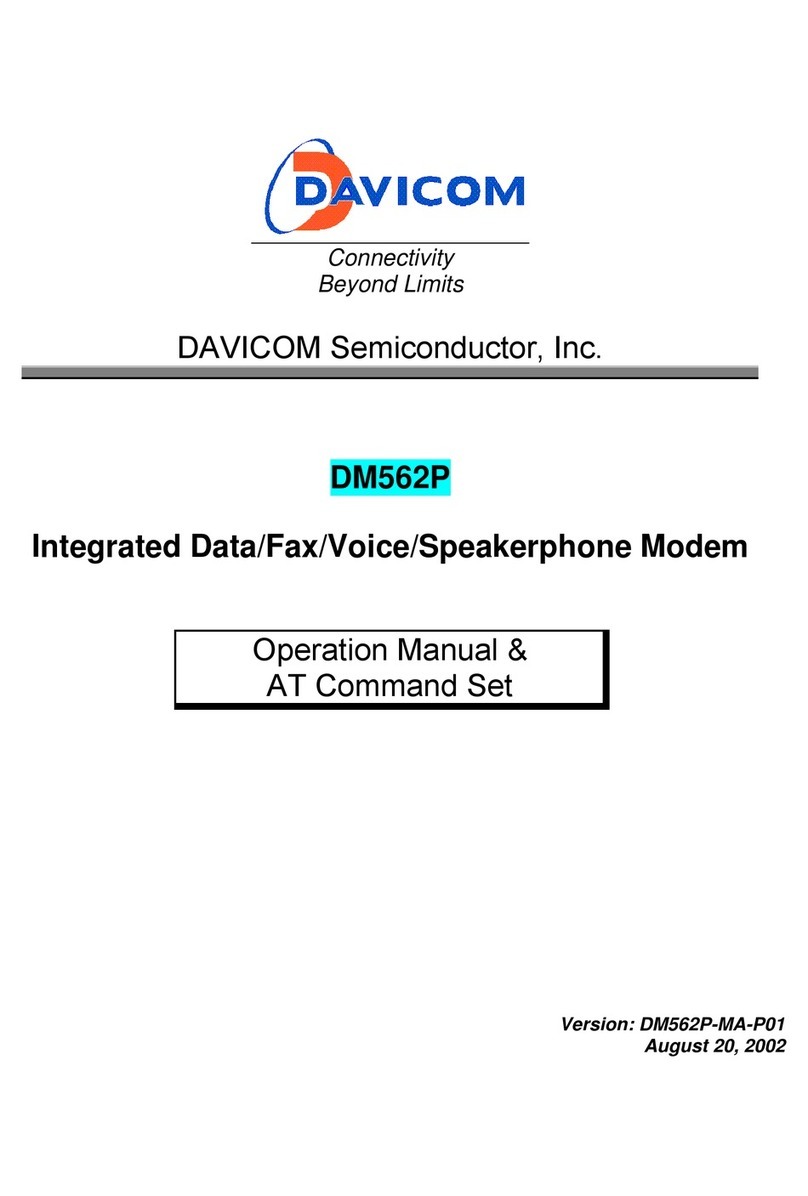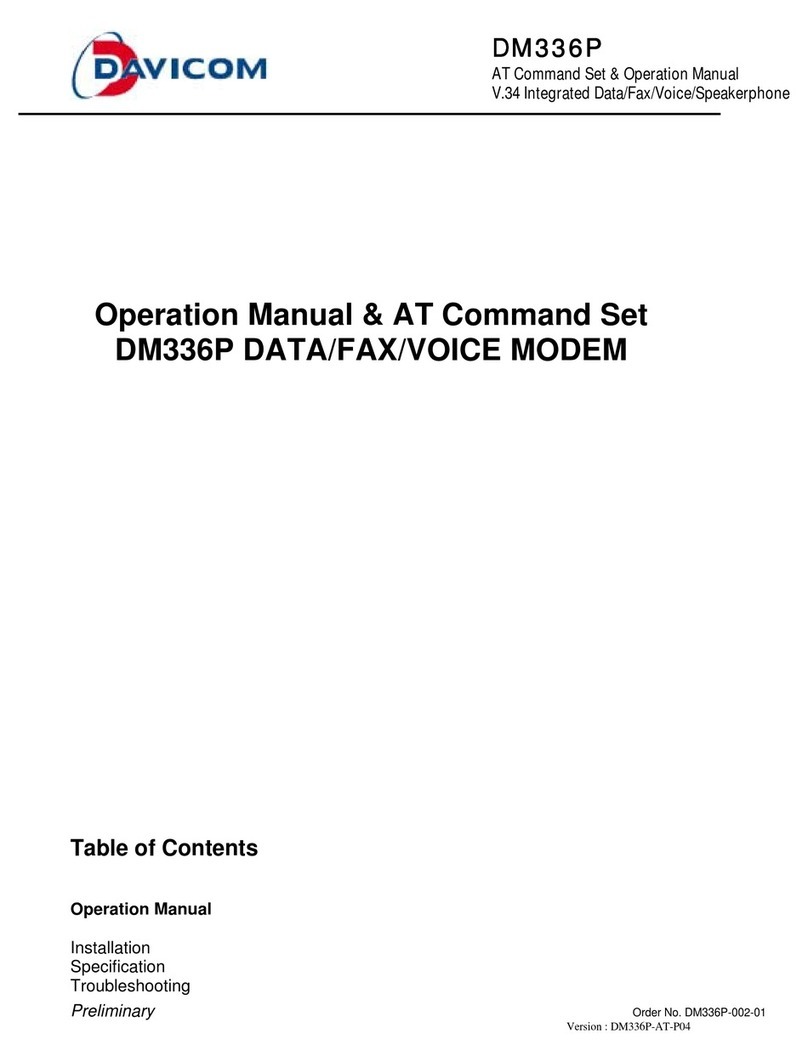DM562AP
Operation Manual & AT Command Set
Integrated Data/Fax/Voice/Speakerphone Modem
6 Preliminary
Version: DM562AP-MA-P01
February 2, 2004
Chapter 2: Installation
This chapter explains how to install your modem and
check whether it is working correctly. To install the
modem you need to perform the following simple steps:
1. Turn off your computer and any attached devices,
such as a printer.
2. Connect the serial cable to the modem and to the
computer. When looking for the serial port on the
back of your computer, look for labels marked
COM1 or COM2.
3. Plug and the power adapter into a standard wall
outlet and insert its plug into the power jack on the
modem.
4. Connect the modem to the telephone line in the wall
jack. If you wish, you may also connect a telephone
set or your telephone devices to the modem
through the "PHONE" jack on the modem.
5. Turn on your modem, then turn on your computer
and Peripherals.
6. Set up your modem.
a. For Windows 95/98 and NT, follow "New
Hardware Found" window to complete the
installation of modem.
b. For other system, please refer to the following
specified procedures.
7. Install a communication software package and
setup the software to operate the modem.
8. Checking the Installation.
Each of these steps is explained in details below.
1. Turn off computer and attached devices.
2. Connect the serial cable
The serial cable may be 9-pin or 25-pin.
3. Plug the power adapter
Warning! Do not use other adapter not offered by
original Manufacturer.
4. Connect the Modem to the Telephone Line
Once the modem is installed in your computer, you are
ready to connect the modem to telephone jack on the
wall. To connect the modem to the telephone line, plug
one end of provided RJ-11C phone cord in the modem
package into the jack, marked as "LINE" jack on the
bracket of the modem, and the other end of phone cord
to the phone jack in the wall.
If you wish, you may connect a telephone set or your
telephone devices to the modem so that both modem
and your telephone devices are connected to a single
wall jack. To connect your telephone devices to modem,
simply plug the modular phone cord of your telephone
devices into the "PHONE" jack on the bracket of the
modem.
5. Turn on the modem and PC
6. Setup your modem
6.a Windows 95 or Windows NT
If your system OS is either Windows 95/98 or
Windows NT, after the step 7, Power up your
computer, you will notice that your computer display
"New Hardware Found" window to prompt you to
setup the new hardware, namely, modem. Follow
the prompt and choose "Have Disk" option, insert
the floppy diskette in the package in the drive and
select that drive. Click OK. your modem is
automatically set up.
6.b Windows 3.x or DOS
1. If your system is not provide the Plug and Play
(PnP) functions, such as Windows 3.x or DOS,
the COM port is decided by the com port you
connected
7. Installing a Software Package
Once you have the external modem, you can install a
communication software package on your computer. ( A
software package is provided with the modem. Of cause
you may use a different software package of your
choice.) You will need the communication software to
operate the modem. (The modem may also be operate
by using the AT commands, described later in this
manual.)
When configuring the software applications, take note
of the following:
1. The setting for "baud rate" in the software
application should be set to 115,200, the highest
supported by the modem. Unless you have special
reason not to. This setting refers to DTE speed ( the
speed with which your computer communicates
with the modem), not the speed of the modem
supported for connection with other modems.
2. Select "RTS?CTS" or "hardware " flow control
handshaking in the software application. This will





























